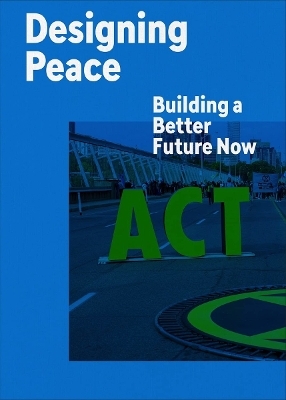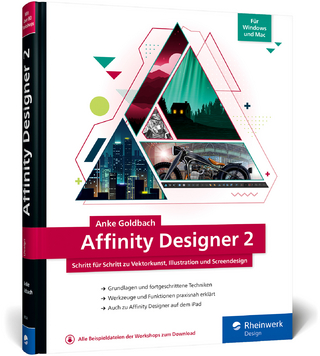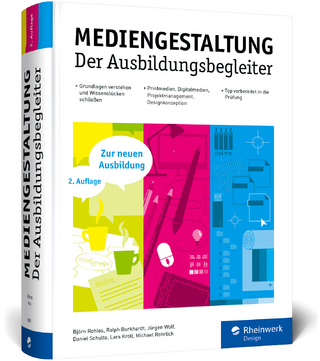
Designing Peace
Cooper-Hewitt Museum (Verlag)
978-1-942303-32-9 (ISBN)
Cyntia E. Smith is an author and editor. John Paul Lederach is a senior fellow at Humanity United and professor emeritus of international peacebuilding at the University of Notre Dame. He is also the co-founder and first director of the Eastern Mennonite University’s Center for Justice and Peacebuilding. In 2019 he won the Niwano Peace Foundation Peace Prize. Dr. Lederach is internationally recognized for his pioneering work in the field of conciliation and conflict mediation. He has provided consultation for peacebuilding efforts in Somalia, Northern Ireland, Colombia, the Basque Country, the Philippines, Tajikistan, Nepal and in East and West Africa. He has also helped develop and lead hundreds of training programs in conflict transformation, mediation and international peacebuilding in 35 countries around the world.
Introduction: Cynthia E. Smith, Cooper Hewitt, Smithsonian Design Museum
I. How might design support a more humane security and peace? “An Architecture of Peace: Scaling the Intimate, Containing the Infinite,” Michael Murphy, MASS Design Group
“The Business of Peace: Designs for Peace-Positive Technology,” Jason Miklian, University of Oslo, and Kristian Hoelscher, Peace Research Institute, Oslo
“Borders and Boundaries,” Beth Simmons, Michael Kenwick, and Dillon Horwitz, University of Pennsylvania
“In Transit: Urban Mobility and Migration,” Tone Selmer-Olsen and Håvard Breivik, Institute of Urbanism and Landscape, Oslo School of Architecture and Design (AHO)
“Imagine the Just City,” Toni L. Griffin, Just City Lab, Graduate School of Design, Harvard University
Projects:
The Adventures of Daly graphic novels (Tunisia)
Body Mapping (Democratic Republic of the Congo)
Island Tracker (East and South China Seas)
Oceanix City (Global)
Papers, Please (Virtual)
Startblok Elzenhagen (The Netherlands)
Social Emergency Response Center (Canada, Serbia, United States)
“Borderwall as Architecture,” Ronald Rael and Virginia San Fratello, University of California, Berkeley
Teeter-Totter Wall (Mexico, United States)
II. How can design help advance peace by addressing the root causes of armed conflict? “The United Nations Security Council Negotiation Process from an Architect’s Point of View,” Michael Adlerstein, United Nations
“New World Summit,” Jonas Staal, artist and organizer
Projects:
CONIFA (Global)
Hate Speech Lexicons (Africa, Middle East)
Regreening Africa (Africa)
Peace Pavilion (India)
House of Peace (Denmark)
Positive Peace Index (Global)
Stalled! (United States)
Universal Declaration of Human Rights Posters (United States)
Rare Earthenware (China)
Astropolitics (Earth and Moon)
New World Summit – Rojava (West Kurdistan)
III. What ways can creative confrontation challenge existing structures and the status quo?
“Beautiful Trouble Toolbox,” Nadine Bloch and Andrew Boyd, Beautiful Trouble: A Toolbox for Revolution
“Glyphs, Inc.: The Quest for Universality through Visual Symbols,” Lee Davis, Maryland Institute of Art and Design
“Objects, People, and Peace,” Caroline O'Connell, Cooper Hewitt, Smithsonian Design Museum
Projects:
Art the Arms Fair (United Kingdom)
Extinction Symbol (Global)
World Peace Symbol (Uruguay)
Maps (bullet rug) series (Colombia, Guatemala, Lebanon, Mexico, Spain, United States)
Black Lives Matter Harlem street mural (United States)
IV. How might design embrace truth and dignity in a search for peace and justice? “Designing the Kitchen,” Merve Bedir, Land+Civilization Compositions
“The Global Legacy of Colonialism: Citizen-State, A Bottom-Up Reparation Model,” Everisto Benyera, University of South Africa, Pretoria
“¿A quién pertenece la tierra? [Who Owns the Land?]” Pablo Ares and Julia Risler, Iconoclasistas
Binalakshmi Nepram, Manipur Women Gun Survivors Network and Control Arms Foundation, India, with Cynthia E. Smith
Projects:
Conflict Kitchen (United States)
Christmas Operations (Colombia)
My Ancestors’ Garden (United States)
Paper Monuments (United States)
The Chronic (Global)
The Murder of Halit Yozgat (Germany)
V. What ways can design support/facilitate transitions from instability to sustainable peace?
Chelina Odbert, Kounkuey Design Initiative for the World Bank/Gender Inclusive Urban Planning
Projects:
HarassMap (Canada, Egypt, Mexico, South Africa, Switzerland, Turkey)
Recoding Post-war Syria (Syria)
RefAID (Global)
Korea Remade (North Korea, South Korea)
Safe Passage Bags (Greece)
Ideas Box (Global)
Designing for Dignity (Norway)
Stone Garden (Lebanon)
BLUE: Architecture of UN Peacekeeping Missions (Mali, Libera)
Casa Azul (South America, Central America, and the Caribbean)
Jordan River Peace Park (Israel, Jordan, Palestine)
| Erscheinungsdatum | 28.06.2022 |
|---|---|
| Co-Autor | John Paul Lederach |
| Vorwort | Darren Walker |
| Zusatzinfo | 230 Illustrations |
| Verlagsort | Chicago |
| Sprache | englisch |
| Maße | 220 x 300 mm |
| Gewicht | 1100 g |
| Themenwelt | Kunst / Musik / Theater ► Design / Innenarchitektur / Mode |
| Mathematik / Informatik ► Informatik ► Grafik / Design | |
| ISBN-10 | 1-942303-32-7 / 1942303327 |
| ISBN-13 | 978-1-942303-32-9 / 9781942303329 |
| Zustand | Neuware |
| Haben Sie eine Frage zum Produkt? |
aus dem Bereich


